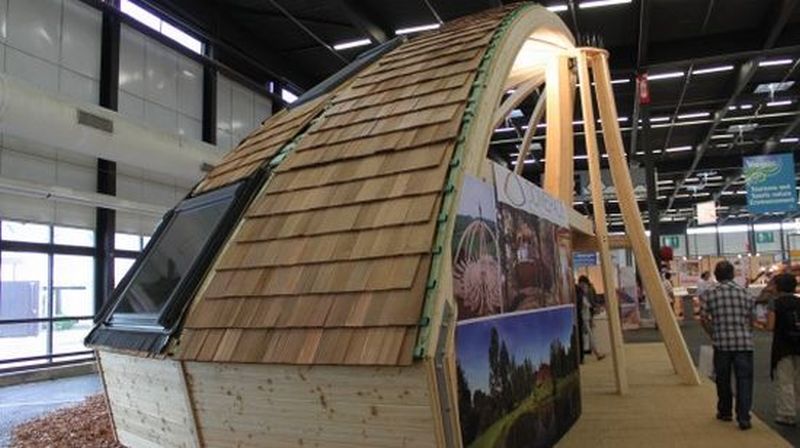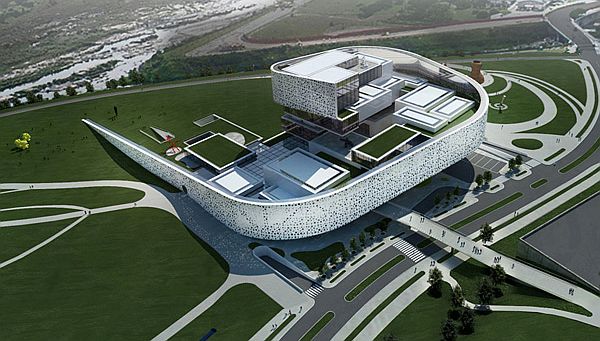
When we talk about causing harm to the environment, it is not only the use of plastics and other stuffs but also those buildings in which we reside in. Buildings are accountable for over 45% of the total carbon releases in UK according to a survey of an environment agency.
Building construction involves use of several materials that cause harm to the environment. Why not take steps to make the building construction Eco-friendly? This could be done by taking some simple measures. You just need to take care of location, efficiency of the materials, energy and water efficiency, appearance as well as the health and safety of dweller. Now you must be wondering these given steps are for a new construction but what about those that already exist. Yes you can take some simple and easy steps to ensure that the building becomes greener, which includes monitoring power, proper insulation and efficient use of water. For new construction, you can very well make use of latest technologies that can be helpful in making homes produce around zero-carbon.
Here are some of the sustainable building innovations for you.
1. House and window positioning and sunlight penetration
Though this is not a new technology, but is a new design that can be very helpful. This can expose as much of a house to sunlight as possible, making sure the least possible area of your house is in shade. Design windows in a way such that sunlight penetrates through it to every part of the room. High windows usually allow light to travel into rooms and these modern layouts of home allow even north facing rooms to get light, thereby saving on heating and the lighting costs. Angle the roofs precisely allowing them to absorb the most possible heat. This will also be useful to get maximum exposure to solar panels.
2. Living roofs and walls
The idea of living roofs and walls is a new one. It is said to be a utopian environmentalist’s idea but has some advantages. If you allowing plants to grow on the roofs, such as sedum, it will prevent the overheating of the buildings. These plants absorb heat at the same time reduce storm water run-off. People can also use their roofs to grow local products. Though growing plants on walls is not a well-developed idea, but ensuring that you grow proper plants on walls, can provide shade during summers and can also allow less sunlight during winters.
3. Convection ventilation system
To establish a single airflow, you need to firstly properly insulate your house. The outgoing air that has been already heated by the house passes closely to the incoming air through the transfers. In this process, some of the heat gets passed to the colder air entering the house from outside. So go for an convention ventilation system.
4. Collecting water run-off
Collecting the water run-off has advantages. You can purify the water and use it in the home. Secondly, postponing the run-off that hits the rivers and watercourses helps avoid flooding during heavy rains. At the same time, stopping run-off from concrete surfaces reduces pollution and avoids the accumulation of excess nutrients and bacteria in the rivers that can be harmful for wild life and endanger drinking water as well in some areas.
5. Greener bricks
Do you know that now you can easily manufacture several building products? These products are not only easy to make but also easy to use in comparison to the traditional bricks. These products are lighter at the same time provide improved insulation. You can also combine foam and concrete to have a stronger interior structure to make up for the lack of solidity.
6. Recycled materials
Being green does not mean using all the latest technology. It also refers to making use of left over materials. The only problem while making building using recycled materials is that the buildings are made fitting the design to these materials. So that does not imply that you cannot make a building from recycled materials. You can make worktops, floors and windows very well from recycled materials. If you make use of recycled materials to make construction materials, including insulation and bricks then the carbon level also goes down. Gravestone, tire manufacturers as well as bottle banks offers materials at a cheaper price.
7. Smart buildings
Smart buildings can sense where you need systems. They automatically turn off lights when there is no one in the room, and it confines air conditioning and heating to required areas. These systems work out efficiently where a building requires heat and you can set up convection current to get heat by opening certain windows and vents.




